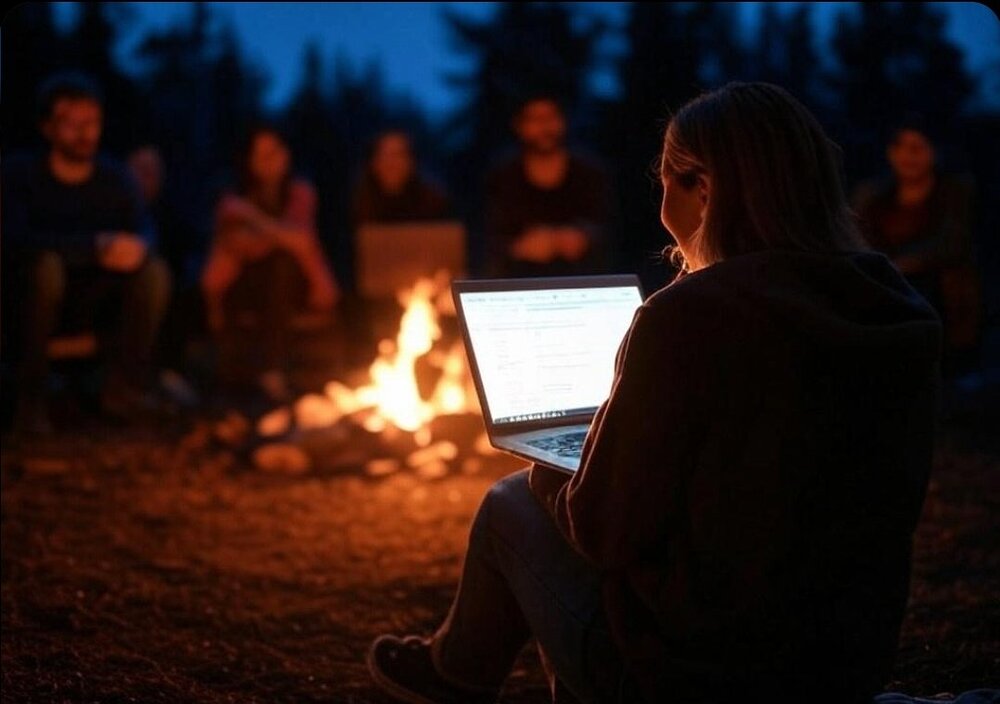The Night of January 2: The Formation of “Prestige Worldwide” SanchoNet Consortium
The virtual room hummed with quiet anticipation as the members of the Cardano community logged into the Governance CC workshop on the night of January 2, on the ABLE Discord server. This was no ordinary meeting—it marked the birth of something new, something ambitious. After months of planning and discussions, the members were finally coming together to create the SanchoNet Constitutional Committee (CC) consortium. Their goal was clear: mastering the infrastructure and joining the SanchoNet Constitutional Committee.
Mike, Jenny, Van, Jonah, Adam, Arcella, and the rest of the group had one shared mission—to understand the intricacies of the credential manager tools and the smart contracts that would shape their future involvement in the Cardano blockchain governance system.
As the meeting began, Mike took charge, his face illuminated by the glow of his computer screen. His voice was calm but carried the weight of the responsibility they were all about to shoulder.
“This meeting is about getting to know each other, setting up the structure of our consortium, and understanding the basics of the CC credentials system and how it works,” Mike said, his tone steady yet filled with anticipation. “Our task tonight is to lay the foundation for everything that follows, and the first step is learning the fundamentals of the credential manager tools and the smart contracts that will enable our governance system.”
Jenny, already a member of the ICC and here to support Mike, nodded along as she observed the others. Her familiarity with the tools gave her a sense of calm, but she was eager to contribute and guide when necessary.
Mike continued, “The heart of the Consortium relies on two credential scripts: cold and hot. The keys that control the cold credential script are stored offline, completely separated from any online environment. These are the ultimate safeguard—created and stored on machines with zero internet access. This ensures they are never vulnerable to external threats. The cold credential script is ruled by a smart contract used to authorize the hot credential script, which is also governed by a smart contract for the voting process to take place. However, in order to vote, we must spend a Hot NFT, which can only be spent if we provide the necessary number of voting credential signatures.”
There was a moment of silence as the gravity of the explanation hung in the air. Jonah furrowed his brow, clearly deep in thought. “So, the Hot NFT is like a ticket to cast a vote… but only if we’ve gathered the right number of signatures? How do we even track that?”
Mike nodded, his expression serious. “Exactly. It’s not just a technical process—it’s a system of checks and balances. The signatures are the key to ensuring that the voting process is both secure and legitimate. But here’s the twist: if we fail to collect the necessary number of signatures, the NFT cannot be spent, and the transaction cannot go through. It’s a delicate dance of trust, security, and precision.”
Van leaned forward, his voice thoughtful. “So, we’re essentially responsible for validating and authenticating each step, right? The cold credentials, the signatures… it all depends on who controls the keys, the hot and cold keys, and how they ensure the integrity of the Consortium.”
Mike nodded. “Exactly. The community can track our actions, but ultimately, we control the keys. The responsibility falls on us to ensure that the process remains secure and transparent. The integrity of the Consortium is in our hands, and it’s crucial that we understand every layer of the infrastructure to ensure it works as intended.”
The room was heavy with the weight of this realization. Adam spoke up next, his voice tinged with curiosity. “What happens if someone tries to manipulate the signatures? Or if there’s a loophole?”
Mike’s lips tightened into a thin line. “That’s where things get really interesting. The tools we’re working with are designed to guard against manipulation. You can’t manipulate the signatures. If the keys you are signing with do not appear in the NFT address datum, your vote transaction will be invalid. These tools are fully functional, and I’m here to show you how they work. You’re not just learning to use something new; you’re learning to use tools that are already tested and reliable. And we’ll need all of you to help ensure future Constitutional Committees use them correctly.”
As the meeting drew to a close, the group knew their work was far from finished. They had started building the foundation for the membership, delegation, and voter roles, but the structure was still in its early stages. There was room for more members, more input, and more collaboration. The potential for expansion was clear, and as the night ended, everyone knew that this was just the beginning of something much bigger.
Looking ahead to the next meeting on January 9, Mike made it clear that the journey was far from over. “We’re hoping more will join us,” he said. “And next time, I’ll do a recap of everything we’ve covered so far. We’ll take a deeper dive into the roles and processes behind the credential manager tool, as well as begin setting up the OpenSSL certificate signing requests. This is just the first step in a long journey, and we need all the Community to be part of it.”
To be continued…
